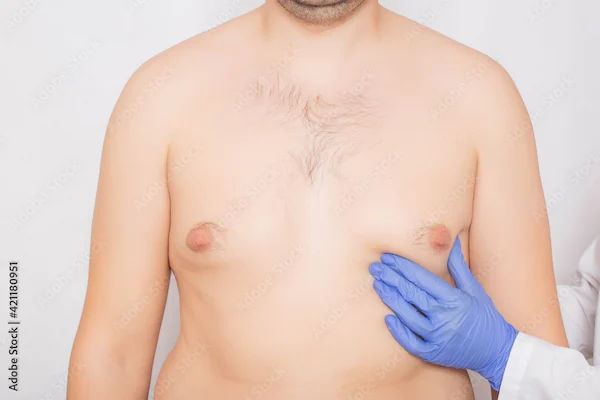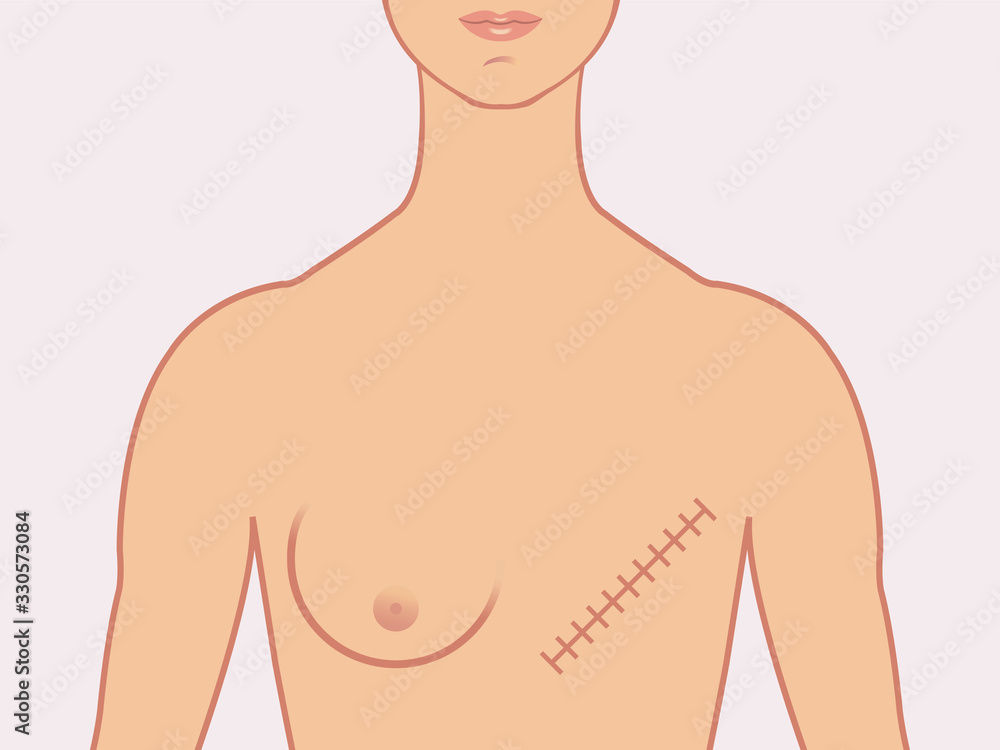How To Reduce Axillary Breast Tissue Naturally?
Learn how to reduce axillary breast tissue naturally with effective home remedies, exercises, and lifestyle changes. Discover safe and natural ways to manage armpit fat and achieve a more contoured look.

Written by Dr.Sonia Bhatt
Last updated on 3rd Jul, 2025

Axillary breast tissue, also known as accessory breast tissue, is a condition where additional breast tissue develops in the underarm (axillary) region. While it’s typically harmless, many individuals find it uncomfortable or concerning, especially when it results in visible lumps, skin irritation, or affects their confidence. The good news is that you don’t always need invasive treatments like surgery to reduce this tissue. Natural methods can help you manage and reduce axillary breast tissue effectively.
In this article, we will explore various natural approaches, including lifestyle changes, targeted exercises, diet adjustments, herbal remedies, and practical tips to reduce axillary breast tissue in a safe and non-invasive manner.
What Is Axillary Breast Tissue?
Axillary breast tissue is the development of additional breast tissue under the arms. This condition is more common in women but can also occur in men. It usually develops along the "milk lines," which are pathways extending from the armpits to the groin that are responsible for milk production during breastfeeding.
Axillary breast tissue can range from small lumps or fatty deposits to more pronounced tissue that mimics the appearance of regular breast tissue. It may appear during puberty, pregnancy, or hormonal changes and is often linked to genetics or excessive weight gain. While it is typically benign, some individuals seek treatment if the tissue becomes noticeable or causes discomfort.
Why Do People Develop Axillary Breast Tissue?
There are several factors that can contribute to the development of axillary breast tissue:
Hormonal Changes: Fluctuations in estrogen and progesterone levels, especially during puberty, pregnancy, and menopause, can trigger the growth of axillary breast tissue.
Genetics: If you have a family history of axillary or accessory breast tissue, you may be more prone to developing this condition.
Weight Gain: Excess fat buildup in the body, including the axillary region, can make existing tissue more pronounced and contribute to the appearance of additional breast tissue.
Pregnancy: Hormonal shifts during pregnancy can lead to the growth of axillary breast tissue as the body prepares for breastfeeding.
Other Medical Conditions: Certain health conditions or medications that affect hormonal balance, such as polycystic ovary syndrome (PCOS), may also contribute to the development of axillary breast tissue.
How To Reduce Axillary Breast Tissue Naturally?
If you have axillary breast tissue and wish to reduce its appearance or size, there are several natural methods that may help.
1. Adopting a Healthy and Balanced Diet
The foundation for reducing excess tissue in any area of the body, including the axillary region, starts with maintaining a healthy diet. A balanced diet can help regulate your body weight, reduce fat storage, and improve overall skin health, all of which can reduce the appearance of axillary breast tissue.
Key Dietary Tips:
Focus on Whole Foods: Include whole grains, lean proteins, and plenty of fresh vegetables in your diet. These foods can boost your metabolism and help with weight loss.
Reduce Processed Foods: Cut back on processed, high-sugar, and high-fat foods that contribute to weight gain and hormonal imbalances.
Healthy Fats: Incorporate healthy fats into your diet, such as those found in avocados, nuts, seeds, and fish. Healthy fats support hormonal balance, which may help regulate the growth of axillary breast tissue.
Estrogen-Balancing Foods: Some foods can help balance estrogen levels in your body, which might play a role in reducing axillary tissue. Cruciferous vegetables (broccoli, cauliflower, and kale), flaxseeds, and soy products are good options.
Focusing on healthy eating can help you manage your weight and address any hormonal imbalances that may contribute to the development of axillary breast tissue.
2. Engage in Targeted Exercise
Exercise is a great way to reduce fat, tone muscles, and improve overall body shape. While targeted fat loss in one specific area isn’t entirely possible, regular exercise can help reduce fat throughout your body, including the axillary region.
Effective Exercises to Reduce Axillary Breast Tissue:
Strength Training for Chest Muscles: Building muscle in your chest region, including pectoral muscles, can help reduce the appearance of axillary breast tissue by toning and tightening the area.
Push-ups: These work your chest, arms, and core.
Chest Press: Using dumbbells or a barbell, perform chest presses to strengthen your pectoral muscles.
Dumbbell Flys: This move targets the chest and arms, helping tone the tissue in the axillary region.
Cardiovascular Exercises: Cardio exercises such as running, swimming, and cycling help burn fat throughout the body, including in the underarm area.
Interval Training: High-Intensity Interval Training (HIIT) has been shown to reduce overall body fat and promote a leaner physique effectively.
Arm and Shoulder Exercises: Exercises targeting the upper arms and shoulders, such as tricep dips, shoulder presses, and lateral raises, help reduce fat and firm the underarm area.
Regularly incorporating these exercises into your routine can lead to gradual fat loss and help shape the axillary region over time.
3. Herbal Remedies for Hormonal Balance
Hormonal imbalances are often at the root of axillary breast tissue development. Certain herbs and natural remedies may help balance your hormones and reduce excess tissue growth.
Herbs and Natural Supplements to Try:
Flaxseeds: Flaxseeds are rich in lignans, which help modulate estrogen levels in the body. These may help prevent excess estrogen from contributing to the growth of axillary tissue.
Turmeric: Known for its anti-inflammatory properties, turmeric may help regulate hormone levels and support weight loss. It can be consumed in the form of supplements or as part of a balanced diet.
Green Tea: Rich in antioxidants, green tea is believed to have fat-burning properties. Drinking a cup or two daily may help reduce fat buildup in areas like the axillary region.
Evening Primrose Oil: Evening primrose oil is known for balancing hormones, particularly estrogen, and may help manage hormonal fluctuations that contribute to axillary breast tissue growth.
Ashwagandha: An adaptogen, ashwagandha can reduce stress levels and help balance hormones, making it a valuable supplement for addressing hormone-related issues.
These herbal remedies can be used in combination with diet and exercise for a holistic approach to reducing axillary breast tissue.
4. Hydration and Detoxification
Drinking plenty of water and staying hydrated plays a crucial role in fat metabolism and toxin elimination. Hydration supports the natural detoxification process, which can reduce the buildup of excess fat in various areas of the body, including the axillary region.
Apple Cider Vinegar: Known for its detoxifying properties, apple cider vinegar may help reduce fat retention and support weight loss. You can dilute a tablespoon in a glass of water and drink it before meals to promote fat burning.
Herbal Teas: Certain teas, such as dandelion root or ginger tea, are believed to support digestion and detoxification. These can help your body rid itself of excess toxins that contribute to fat buildup.
By increasing your water intake and using detoxifying drinks, you can help keep your body hydrated and aid in the reduction of axillary fat over time.
5. Massage and Essential Oils
Massaging the axillary region with essential oils can help stimulate circulation, break down fat cells, and reduce the appearance of axillary breast tissue. Oils like peppermint, rosemary, and grapefruit have fat-burning properties and may aid in this process.
How to Perform Axillary Massage:
Mix a few drops of essential oil with a carrier oil (such as coconut or almond oil).
Gently massage the underarm area in circular motions for 5–10 minutes.
Perform this massage 3–4 times a week to improve circulation and support fat breakdown.
Regular massage, combined with essential oils, can promote a more toned and smoother underarm area.
When Should You Seek Medical Advice?
While natural methods are often effective, there are situations where medical advice may be necessary:
If the tissue feels painful or stiff, or if it rapidly changes in size,
If there is any discharge from the area, it could be a sign of an underlying condition.
If you experience significant discomfort or self-esteem issues related to axillary breast tissue.
In such cases, consulting with a healthcare professional to explore other options, such as noninvasive procedures or surgery, is important.
Conclusion
Reducing axillary breast tissue naturally is possible with the right combination of diet, exercise, herbal remedies, and lifestyle changes. A balanced approach that includes healthy eating, targeted exercises, proper hydration, and hormone-balancing herbs can help you manage and reduce the appearance of axillary breast tissue over time. Remember that patience and consistency are key. See professional advice if you notice any concerning changes in your axillary tissue. You can feel more confident and comfortable in your skin with the right care and approach.
Consult Top Gynaecologist and Obstetrician
Consult Top Gynaecologist and Obstetrician

Dr. Parul Sharma
Obstetrician and Gynaecologist
8 Years • MBBS, MS (Obstetrics & Gynaecology)
New Delhi
THE DOCTORS NESST, New Delhi

Dr. Asha Rani Singh
Obstetrician and Gynaecologist
24 Years • MBBS DGO
Delhi
Dr Asha Rani Singh Clinic, Delhi
Dr. K Anusha
Obstetrician and Gynaecologist
4 Years • MBBS, DGO
Yemmiganur
SRINIVASAA HOSPITAL, Yemmiganur

Dr. Shyamala Devi
Obstetrician and Gynaecologist
38 Years • MBBS, MS Obstetrics & Gynaecology
Vijayawada
Sri Shivshakti Nilayam, Vijayawada

Dr. Sridevi Matta
Obstetrician and Gynaecologist
28 Years • MS ( OBG ), DGO, DNB Obstetrics & Gynaecology
Chinagadila
Apollo Hospitals Health City Unit, Chinagadila
(175+ Patients)




